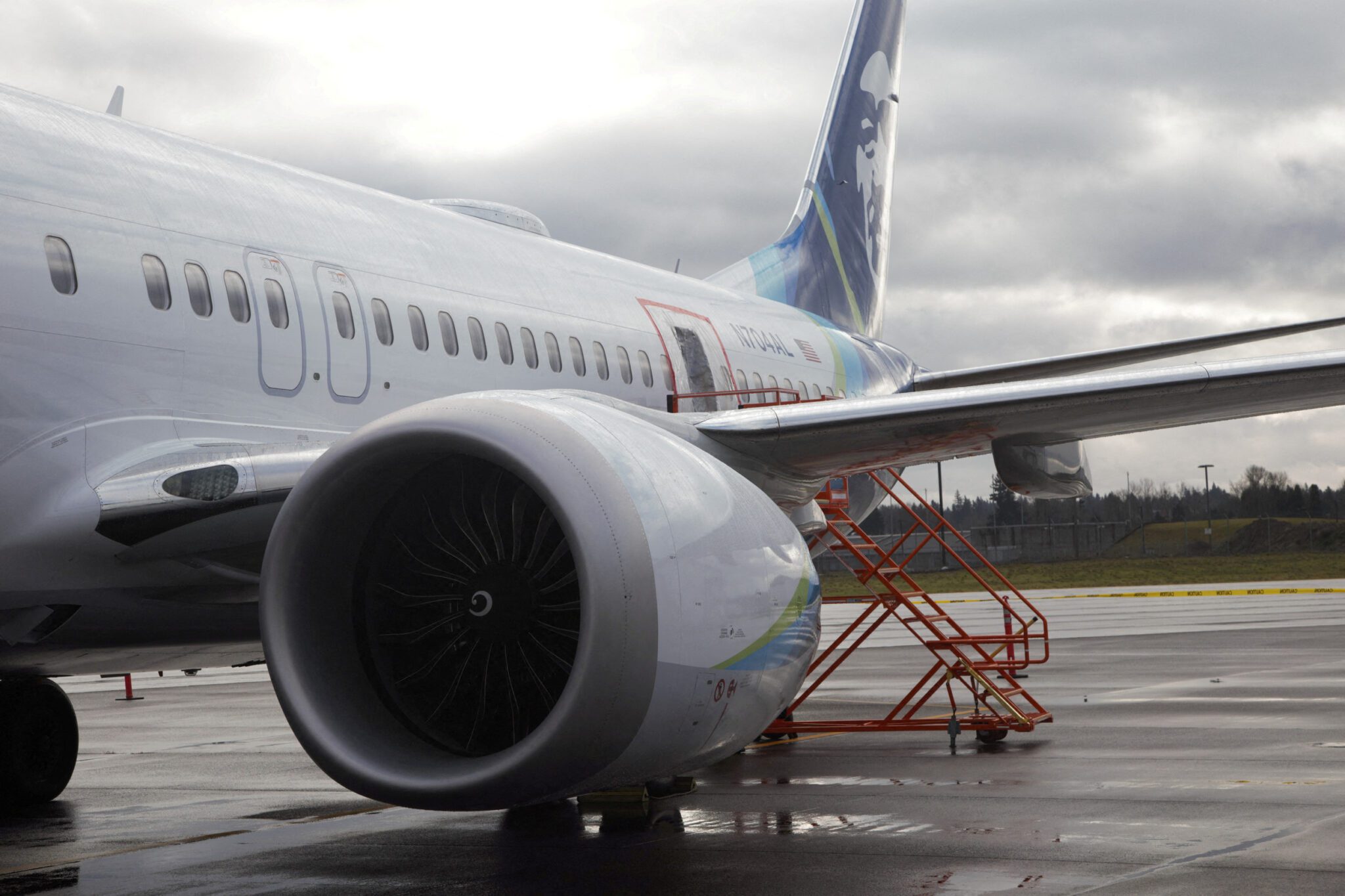Skift Take
Alaska said it is focused on holding Boeing accountable after a door plug blew off from one of its jets mid-flight.
Alaska Airlines said Thursday the Boeing 737 Max 9 grounding will cost it $150 million and that the airline would hold Boeing accountable.
“We’re going to hold Boeing’s feet to the fire to make sure we get good airplanes out of that factory,” Alaska CEO Ben Minicucci said in a call with analysts.
Alaska maintains an all-737 fleet.
Shane Tackett, Alaska’s chief financial officer, said the carrier expects Boeing to reimburse the $150 million loss.
“We fully expect to be made whole for the profit impact of the grounding,” Tackett said.
The Federal Aviation Administration grounded the Max 9 January 5 after a door plug blew off an Alaska Airlines jet mid-air. Alaska operates 65 Max 9s, and the grounding prompted the airline to cancel over 3,000 flights in January, Alaska chief commercial officer Andrew Harrison said on the call.
The FAA said Wednesday night that airlines can begin the inspections to return the Max 9 to service. Alaska said it expects to resume Max 9 flights on Friday.
Minicucci started the carrier’s fourth-quarter earnings call with an apology for the January 5 incident on flight AS 1282.
“I am deeply sorry to everyone on board Flight 1282 for what they experienced on January 5 and to all of those who have seen their travel plans disrupted by cancellations,” Minicucci said.
Minicucci told NBC News earlier in the week he was “angry” at Boeing for the incident.
“I am angry. This happened to Alaska Airlines,” Minicucci said in an interview for NBC News’ “Nightly News With Lester Holt.” “It happened to our guests and happened to our people. And — my demand on Boeing is what are they going to do to improve their quality programs in-house.”
Executives said on the call that Alaska’s reputation hadn’t experienced any major damage since the incident. Minicucci said he expected consumer confidence in the Max 9 would strengthen over time.
“I think at first, people will have some questions and anxiety,” Minicucci said. “But I believe over time, the confidence will get back into this airplane.”
The Alaska CEO also clarified that early reports of pressurization issues with the jet that led the airline to bar it from flying to Hawaii were unrelated to the incident.
“This was an issue with the door plug. We got a faulty door plug from Boeing, totally unrelated to the light or to the pressurization issues,” he said.
Merger With Hawaiian Airlines
While the Max 9 grounding consumed much of the call, Minicucci also touched on the likelihood of the federal government approving its merger with Hawaiian Airlines after a judge blocked the JetBlue-Spirit merger.
“It’s very pro-consumer, and it’s also very pro-competitive,” the Alaska CEO said. “Customers in Hawaii will have an expansive network to fly to the United States and internationally, our customers on the West Coast will have more options to fly to Hawaii and internationally. So it’s very different from the JetBlue-Spirit.”
Before the grounding, Alaska said it expected to grow capacity by 3% to 5% in 2024, but now expects growth to be at or below the lower end of the range.
Alaska posted a net loss of $2 million for the fourth quarter and $2.6 billion in operating revenue. For the full year, Alaska had a net income of $235 million and a record operating revenue of $10.4 billion.
The Daily Newsletter
Our daily coverage of the global travel industry. Written by editors and analysts from across Skift’s brands.
Have a confidential tip for Skift? Get in touch
Tags: alaska airlines, as 1282, boeing 737 max 9, faa, Federal Aviation Administration
